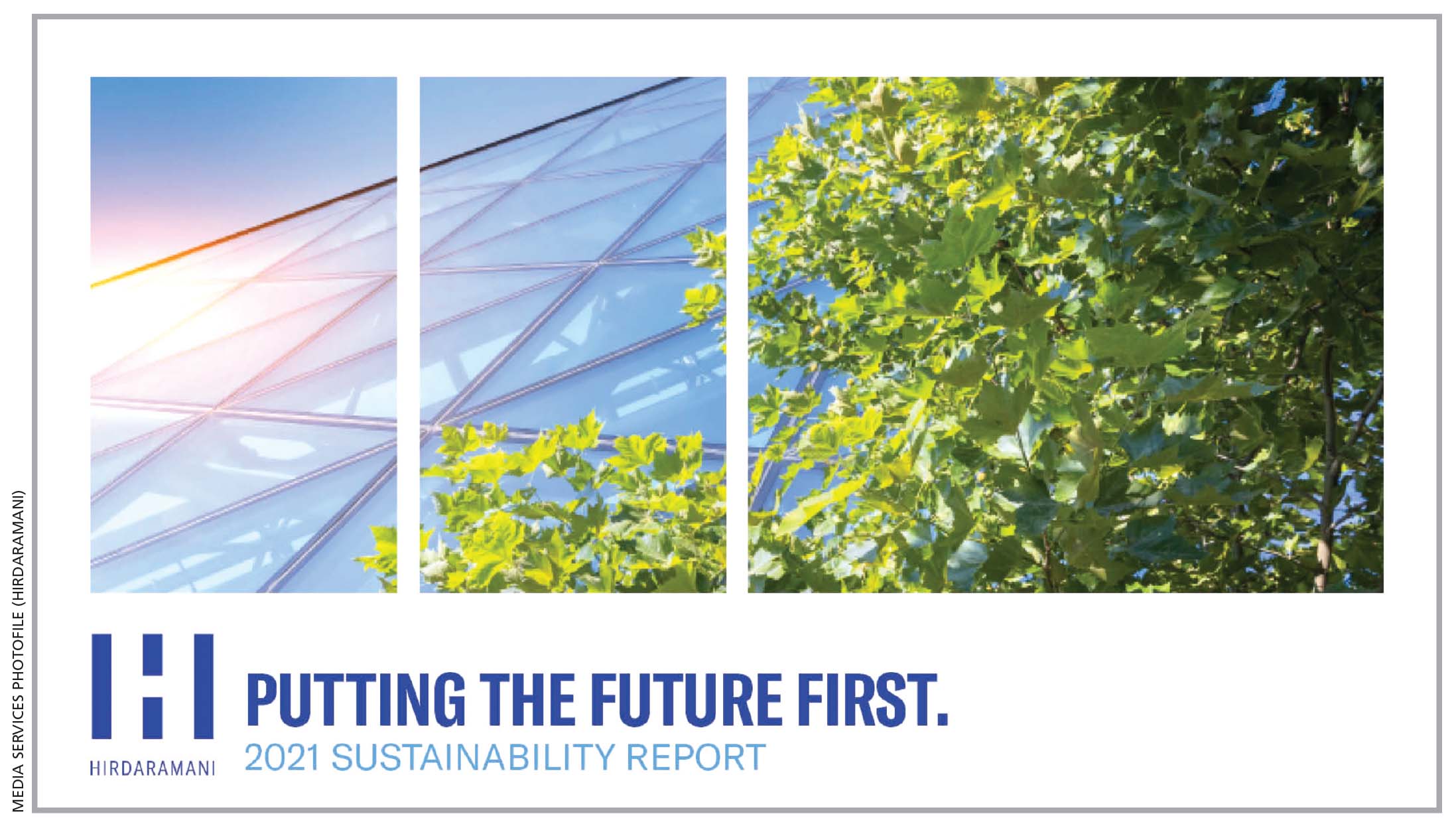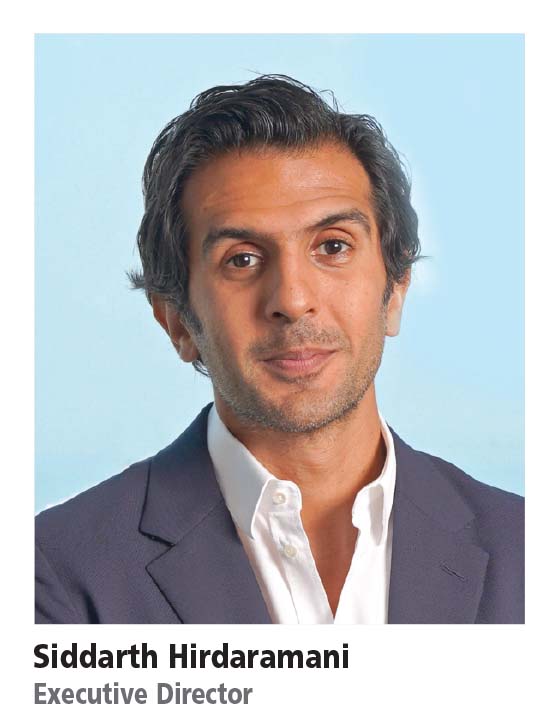HIRDARAMANI
Putting the future first
Q: Hirdaramani recently released its 2021 Sustainability Report; what can you share about this first report?
A: Sustainability has been a key focus area for the Hirdaramani Group over the past 15 years. It is embedded in everything that we do. The 2021 report marks a new stage in our sustainability journey and our evolution as a more sustainable business.
While we have had a sustainability strategy in place for many years, in 2019 we reevaluated our policy and began looking at how we can improve. We worked with external consultants
to develop a comprehensive materiality assessment of where we are and then set ambitious goals for where we want to be.
‘Future First’ encapsulates this ideology and is our 2025 sustainability roadmap. It brings together all our operations across Sri Lanka, Vietnam and Bangladesh as we move away from individual country commitments to a cohesive group-wide roadmap.
An important part of this process is a commitment to be more transparent and hold ourselves accountable, and it begins with our 2021 report. While our sustainability data and progress have been available to our customers and partners, we are now committing to annual reporting as we move towards achieving our 2025 goals.
Q: Could you tell us a little bit about your targets?
A: In our 2025 roadmap, we have identified four pillars of sustainability. For each pillar, we have set specific and ambitious targets. The pillars include commitments to conserve the environment, empower our people, sup-port the community and build trust by making
positive operational choices.
Our commitments are aligned with the UN Sustainable Development Goals and adhere to industry standards such as ZDHC, ISO, Fairtrade, LEED and more. We are also reviewing and implementing additional standards such as SBTi and GRI to add depth to our commitments and reporting.
Some of our key pledges for 2025 include one hundred percent of our facilities being LEED green building certified, one hundred percent of our employees being involved in our Wonders of Wellbeing (WoW) programme, zero waste to landfills, 80 percent of all raw materials used to be certified sustainable and each factory to impact at least 12,000 people annually through community programmes.
Q: How has the company’s journey progressed towards becoming a more sustainable business?
A: Sustainability has always been an essential focus for Hirdaramani. Though our journey began in 2006, the core ideals of being a sustainable and responsible organisation are part of
our heritage and culture as a family business, and have always sustained our operations.
However, in 2006 we really looked at our operations, our industry and the state of the planet and made a decision to commit to sustainability in a more structured manner.
We opened our first green factory – ‘Mihila’ in Agalawatta in 2008 and that changed how we viewed our operations. By treading into unknown waters, we were able to understand the environmental, operational and business benefits of a sustainable factory.
Choosing sustainability costs more in the short term but the long-term benefits for businesses and the planet are massive. It takes commitment to realise these benefits and one of our goals is to be an example to other enterprises in this regard.
Q: Hirdaramani has won many accolades for its work in sustainability – so what made you decide to review and revisit your strategy?
A: As a business we have never stood still. When we began this journey, we did achieve many firsts – the world’s first custom-built green apparel factory and Asia’s first carbon neutral apparel factory, to name a few. These achievements happened because we chose
to innovate and challenge ourselves. And our new roadmap is another step in this perpetual journey.
Sustainability is a rapidly evolving space with new ideas, technologies, opportunities and standards emerging every day. And at Hirdaramani, we are part of that evolution. We are actively involved with organisations such as the Ellen MacArthur Foundation, the Sustainable Apparel Coalition and many more in changing the way we look at apparel and manufacturing, and creating a more sustainable industry.
We believe we have a unique opportunity and a responsibility as a leader in this industry. This is the legacy we want to leave – be part of the change and help create that change, and ensure that we create a future that’s better for people and the planet.
Q: What comes next on this journey?
A: These last few years have been challenging – first with COVID-19 and now with the economic crisis. However, we have kept our focus, which is shown in our 2021 report.
Given our ambitious targets, there’s still much work to be done. Indeed, we are forging ahead and numerous projects are already underway, and our focus is on staying on track with our targets in 2022. We have always known we are part of a greater whole and we will continue to do our best to make the world a better place and create a more sustainable future for everyone.
Website www.hirdaramani.com






